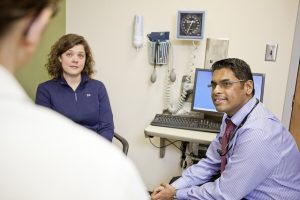What happens when patients read their charts
 Over five million patients reading their charts, particularly a primary care doctor’s notes – with identifiable benefits for patient safety. Beginning in 2010, more than 100 primary care physicians invited their patients to read their office notes through a secure website.
Over five million patients reading their charts, particularly a primary care doctor’s notes – with identifiable benefits for patient safety. Beginning in 2010, more than 100 primary care physicians invited their patients to read their office notes through a secure website.
Patients read their charts say
- Feeling more in control of their health
- Better prepared for their visits
- Better recall of what occurred during the office visit
- Catching medication errors
- Being better able to remember next steps
- Improved adhere to the plan of care
Other benefits included
- Improved coordination of care
- Reduced delays in deriving diagnoses
While physicians defined many benefits of letting patients read their charts, they had some concerns
- Would notes become vaguer because patients were reading them?
- How will patients define mistakes?
- Would patients report errors?
- Would trust be impacted?
We know from being involved in the medical malpractice litigation world that patients often seek attorneys to get answers when something goes wrong. The breakdown in communication between patients and their providers often fuels a search for answers. More transparent, open communication between patients and providers should reduce some of need for answers. All of the benefits from this kind of open communication should reduce medical errors and improve patient safety. I applaud this effort.
Pat Iyer is president of the Pat Iyer Group, and a past president of the American Association of Legal Nurse Consultants.
